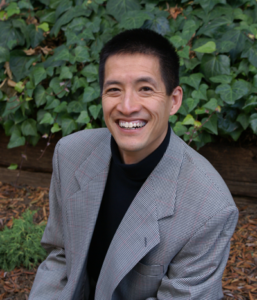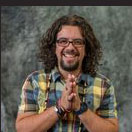student learning goals
Select an item by clicking its checkbox

Finding the Why: Personalizing Learning in Higher Education (New Directions for Teaching and Learning, Number 145)
Date Reviewed: November 30, -0001
Whenever I’m asked, “How are your classes going?” my answer traditionally has been, “Ask the students.” As more faculty members shift their pedagogy to a student-centered learning, their focus must include not only delivering the content but also inviting students to explore the why of education. The articles in Finding the Why: Personalizing Learning in Higher Education edited by margit misangyi watts (sic), identify key ways to encourage students to discover the purpose of higher education as more than training for a career. While many of the articles describe institutional changes that have been developed to address the student success beyond the university, the principles behind such designs can be incorporated by individual faculty members in approaching how to present their courses’ content.
One of the key principles is to encourage students to identify the applicability of a liberal-arts education to professional courses. One means by which this can be accomplished is described in “Integrative Learning: Making Liberal Education Purposeful, Personal, and Practical.” Ann Ferren and Chad Anderson describe several examples from various colleges that integrate learning across curricula and are adaptable even for larger institutions, such as designing opportunities for students to integrate curricula using collaborative projects, partnerships with the local community for service-learning, and making connections among disciplines. Furthermore, in “Project-Based Learning in Colleges of Business: Is It Enough to Develop Educated Graduates?” Penny Smith and Lindsey Gibbon note that business leaders are seeking qualities such as critical thinking skills, identifying and using creative problem solving, and communicating effectively. They note that “for business schools to graduate ‘well-educated’ students, they must forge and engage entire academic villages” (43) in preparing business students for their careers.
Another important component of finding the why requires understanding the challenges in culture that affect the attitudes impacting student-centered education. Several of the chapters incorporate strategies to change the culture at institutions themselves to meet the ongoing challenges to student success. Among such recommendations are faculty “talking to students in a way that is supportive and encouraging” (29) or engaging in the six “P’s” of place, preparation, pathways, plan, purpose, and personal connection as explained by Sanford Shugart in “Why Higher Education: Lessons Learned in a Learner-Centered College.”
While many of the articles describe specific activities involving changes within the entire institution, such as integrative classes or designing a community college’s plan from its inception, the authors do challenge individual faculty to incorporate helping students find the why within their particular courses. The key to student success in many of the articles involves engaging students individually, not just collectively. Therefore, some of the strategies discussed can be applied by individual faculty on a smaller scale. While my answer to “How are your classes going?” may be the same, my intentionality within my course itself should have students answering in the positive.
Those of us who spend our leisure time watching the Tennis Channel are guaranteed to have seen numerous episodes of the marketing promotion called, “Bag Check,” where the top players reveal, one item at a time, what they carry in their huge “clearly labeled” tennis bags. Even though we realize ...

Facilitating Learning with the Adult Brain in Mind: A Conceptual and Practical Guide
Date Reviewed: March 7, 2016
Neuroscience is a burgeoning field, and Kathleen Taylor and Catherine Marienau mine it skillfully to craft Facilitating Learning with the Adult Brain in Mind. This book is not structured like many teaching books – it begins, after all, with a drawing of “The Theater of Knowing,” to which the authors refer throughout. But to write it off because it is unfamiliar would be a mistake – this is a valuable book for any teacher of adults, no matter the subject.
Taylor and Marienau had been searching for a book that would “describe in language accessible to non-neuroscientists… how the adult brain works and also how to use this understanding to construct more brain-aware approaches that help adults learn and perform more effectively in diverse settings” (ix). Eventually they discovered that “the book we wanted to read was the one we would have to write” (x). Readers are the beneficiaries here; the research is fresh, the applications diverse, and Marienau and Taylor model brain-aware approaches in how they structure the book.
Part One distills brain science for the lay reader. For example, we learn that anxiety and curiosity function simultaneously in the brain, and good teaching should both stimulate the curious brain and reassure the anxious brain. “The science in Part One is grounded in brain research; however, we frequently use stories and metaphors to illuminate technical ideas. In similar fashion, we often describe the brain and its functions in analogical rather than anatomical terms,” the authors describe (xv).
Part Two sets forth an array of practices – embodied, metaphorical, verbal, theoretical, and more – to enhance adult learning. Taylor and Marienau interviewed a number of practitioners whose best practices are illustrated here. Part Three brings theory and reflection into dialogue with both the neuroscience from Part One and the practices introduced in Part Two. “Rather than begin our book with theory, which is typical, we first illuminate practice in part Two because… theories are more meaningful when the brain can connect them to concrete experiences” (xvi).
Key ideas are reviewed at the end of each chapter; visual illustrations and boxed examples enhance and expand on ideas introduced in the main text. The authors suggest additional reading at points, rather than devoting too much time to subthemes. They also provide opportunities for reflection at the conclusion of the chapters, encouraging readers to draw or sketch reflections as a way of accessing different brain functions. At various points, the reader will experience recognition: “Ah, that’s why this happens.” Other sections will inspire new approaches to try.
“Without necessarily identifying them as such, many experienced facilitators use embodied, analogical activities in their workshops, classes, or coaching and consulting settings because they have found them to greatly enhance adults’ grasp of key concepts as well as their own practice” (175). Many college and seminary professors, by contrast, were never trained in teaching. Sections on multiple intelligences and Kolb’s model of experiential learning, then, offer an added boon to readers with less experience in educational theory.
Parenthetically, reviewing this book was so influential that it has now become assigned reading for all adjunct faculty in a department to which I recommended it.
To teach is to create worlds. Worlds known and unknown, worlds that we will visit and be visited by, worlds that will haunt us. Worlds that we hope students will engage in many ways. Worlds that hopefully will show the ways in which their own worlds are constituted so they ...

Facilitating Seven Ways of Learning: A Resource for More Purposeful, Effective, and Enjoyable College Teaching
Date Reviewed: December 23, 2015
Two university educators who have led campus teaching and learning centers and worked as academic administrators have served us all well with their Facilitating Seven Ways of Learning. Davis and Arend seek explicitly to connect teaching practices to specific learning goals chosen for university classes. Not only do I recommend this book to you, but I will use it in my January PhD Teaching Seminar.
At times the language of the book is a bit grand, talking about being “trapped” in a “lecture paradigm” with an “obsolete” view of learning (5, 8). They claim “confusion reigns as the paradigm crumbles (15).” I forgive them, for it does not continue too long. Perhaps the assumption was that a grand view was necessary to sell books to skeptical readers. Nevertheless, the book delivers what it promises: to help faculty, trained as scholars, researchers, and writers, to focus additionally on being effective teachers concerned about learning – for citizenship, personal development, and the ongoing generation of knowledge.
Conversation about teaching is increasing in graduate schools, professional schools, and universities. At a recent consultation, I heard faculty members talk among themselves about how they trusted their colleagues, knew that individual classes were faithful and effective, and yet were concerned that their overall curricular goal for critical, integrative practical theological wisdom was not occurring. One mentioned that they all worked hard at fulfilling goals for individual classes, but had not attended to specific integrative commitments of their curriculum together. Facilitating Seven Ways of Learning is a way to begin addressing that concern.
After assisting faculty to define course learning goals, the authors take seven explicit learning commitments and demonstrate effective pedagogical practices. The seven ways of learning are: building skills; acquiring knowledge; developing critical, creative, and dialogical thinking; cultivating problem-solving and decision-making abilities; exploring attitudes, feelings, and perspectives; practicing professional judgment; and reflecting on experience. One can see the influence of Bloom and Shulman here. The authors help faculty clarify how learning goals connect with these seven ways of learning and offer concrete strategies for teaching. To quibble: I am not certain that simply reflecting on experience is a goal. Is it not more a learning strategy for professional judgment, acquiring knowledge, or practicing decision-making skills? Regardless, this book will generate conversation among faculty members and will assist them to make the move from learning commitments to classroom strategies.
As mentioned, I will use this book in my next PhD teaching seminar. Faculty are committed to assisting doctoral students to consider the vocation of teaching, connect academic study with teaching, and gain practical skill in course design and teaching practices. I have brought together bibliographies on theological education, course design, and learning strategies that I routinely share with graduate students. With Facilitating Seven Ways of Learning, students can practice naming commitments of their disciplines and their own scholarship, explore the learning goals they have for their students, dialogue with faculty mentors about the particular concerns of classes, and connect teaching practices to learning commitments. Clearly this book was written after years of experience in a college teaching center, empowering faculty colleagues. I recommend it.

